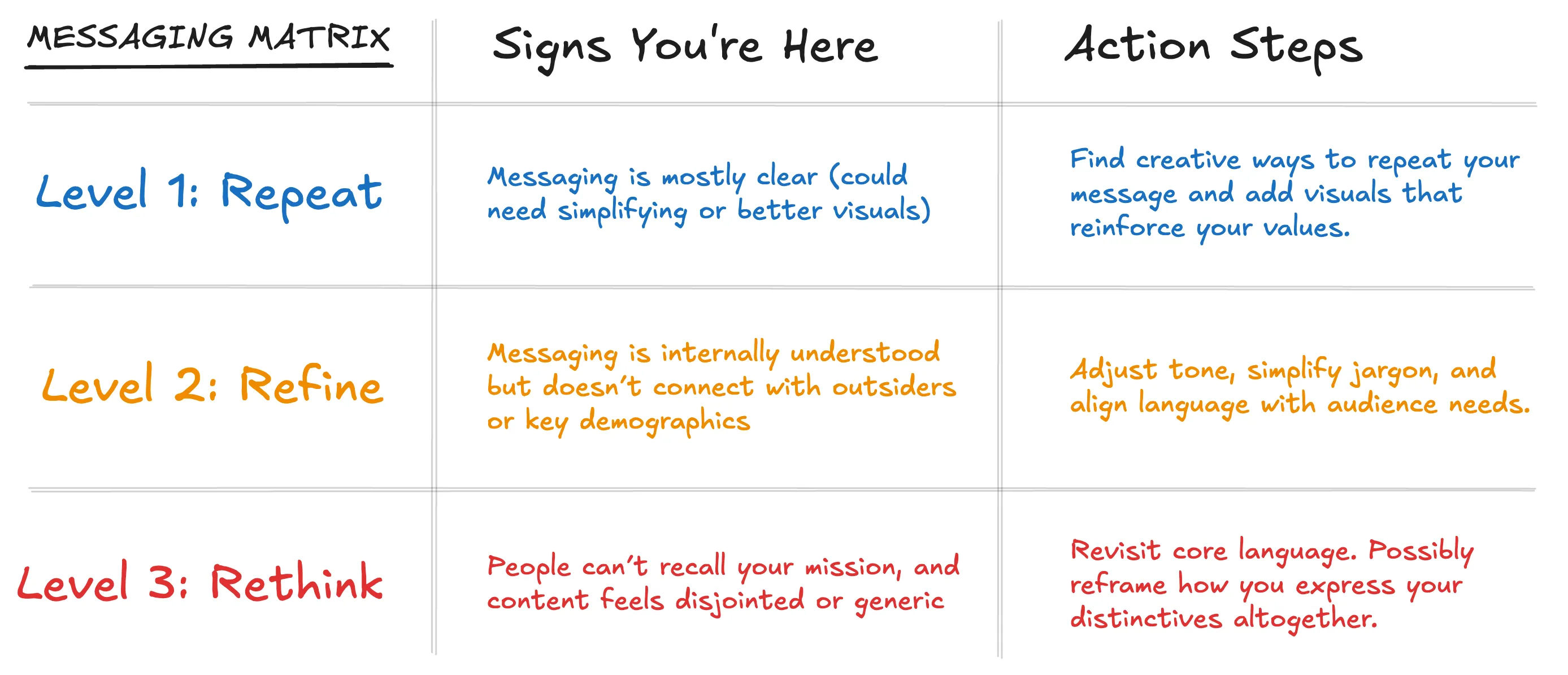Too Many Pastors Are Afraid to Change This (Messaging)


Messaging might be the trickiest part of brand-building, but it’s also the most important. While you want to stay consistent over time, there are ways to evaluate, tweak, and test your messaging so that it doesn’t become stale.
Today, I want to look at the five steps that branding experts use for messaging refinement and apply it to a church context. By the end, you should have a good idea of how to make messaging adjustments (and if you need to at all).
Ask yourself: “What exactly are our distinctives, and are they stated in a way people actually remember and repeat?”
Here’s a practical test: Ask 5-10 people (leaders, members, new attendees) to describe the church’s mission/values in their own words. If responses vary widely or miss the mark, your messaging might lack clarity or memorability.
I've written before about how church communication is unique because you have two audiences: a congregation and a community. Because of this, you need a way to evaluate your messaging with each.
Review 3 to 5 pieces of existing content you’ve published in the past. These can be things like your website homepage, social media bio, flyer, sermon intro, or email footer.
I recommend creating a simple scoring scale (1 - 5) so you can easily compare and evaluate each piece of content.
Use this matrix to figure out how much you might need to adjust course with your church's brand messaging:

It’s nerve-racking, but there’s no better way than real-world testing to know if you’ve made a meaningful change.
Try your adjusted tagline, mission statement phrasing, or value summary in a few formats (social post, bulletin blurb, sermon series). Then, watch for engagement and organic adoption by your congregation. If people start using your new language on their own, you’re on the right track.